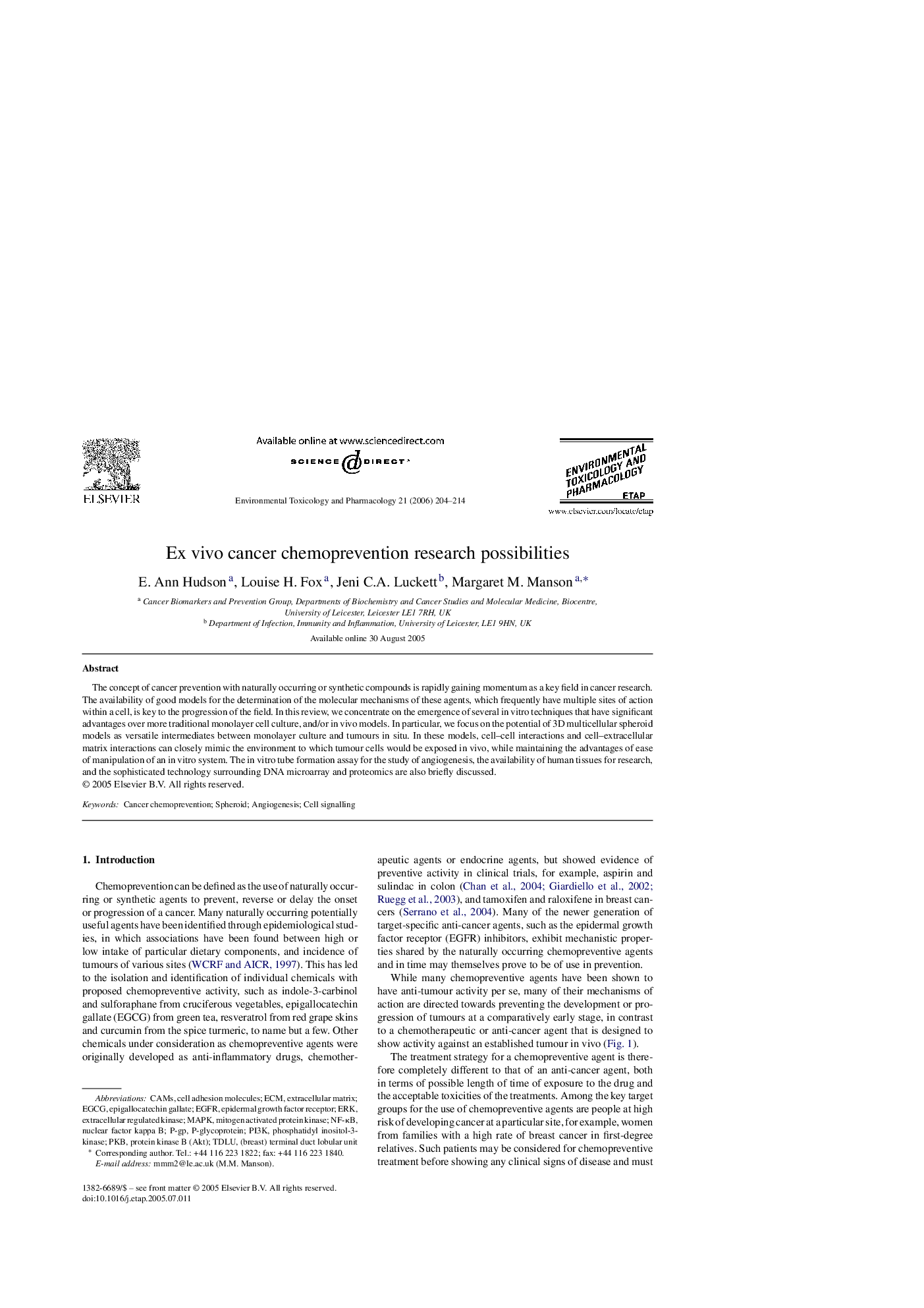| Article ID | Journal | Published Year | Pages | File Type |
|---|---|---|---|---|
| 2584552 | Environmental Toxicology and Pharmacology | 2006 | 11 Pages |
The concept of cancer prevention with naturally occurring or synthetic compounds is rapidly gaining momentum as a key field in cancer research. The availability of good models for the determination of the molecular mechanisms of these agents, which frequently have multiple sites of action within a cell, is key to the progression of the field. In this review, we concentrate on the emergence of several in vitro techniques that have significant advantages over more traditional monolayer cell culture, and/or in vivo models. In particular, we focus on the potential of 3D multicellular spheroid models as versatile intermediates between monolayer culture and tumours in situ. In these models, cell–cell interactions and cell–extracellular matrix interactions can closely mimic the environment to which tumour cells would be exposed in vivo, while maintaining the advantages of ease of manipulation of an in vitro system. The in vitro tube formation assay for the study of angiogenesis, the availability of human tissues for research, and the sophisticated technology surrounding DNA microarray and proteomics are also briefly discussed.
